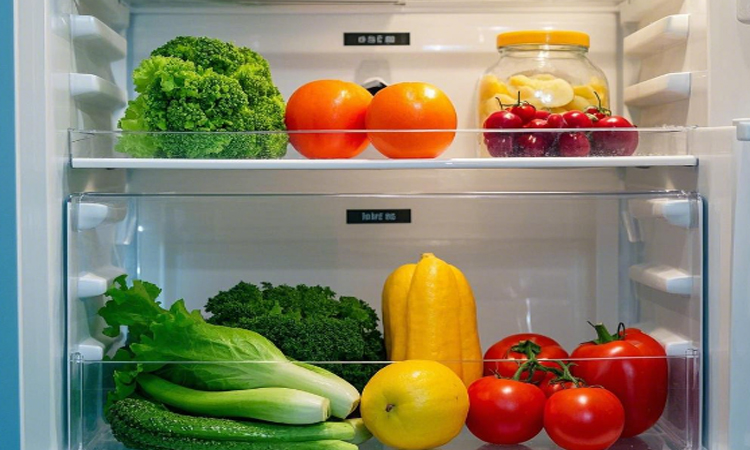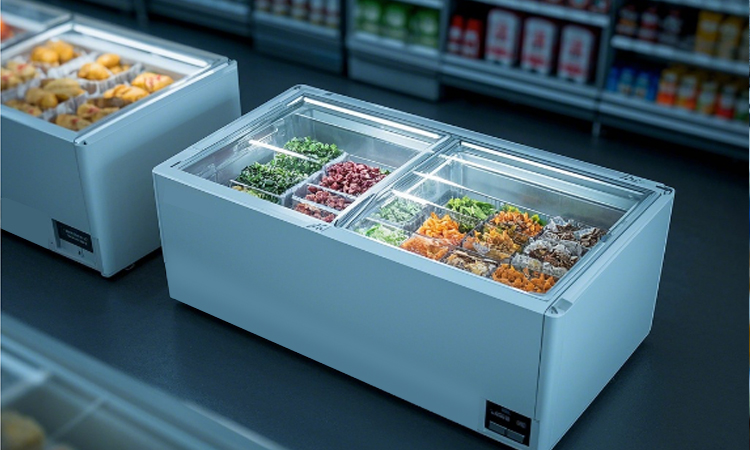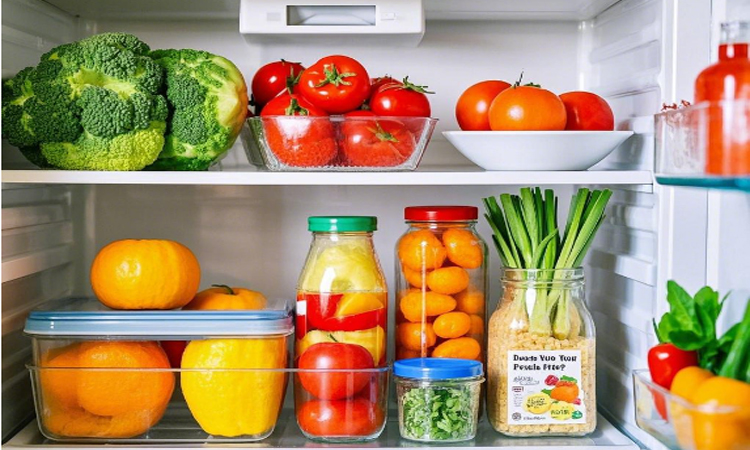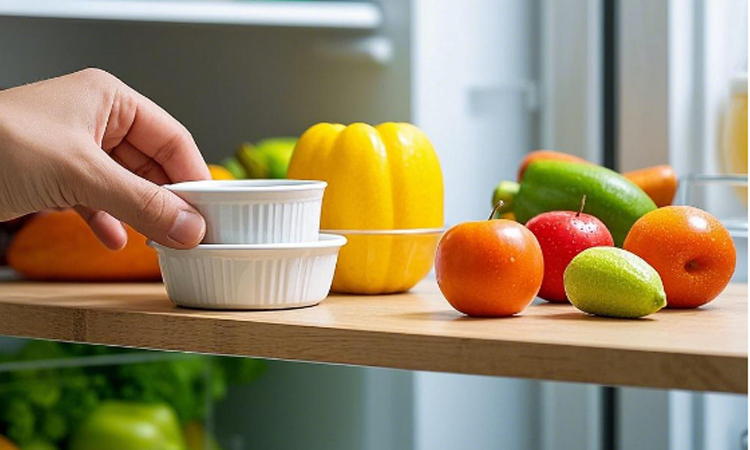
In the food service and retail industries, maintaining optimal storage conditions for perishable products is paramount. Two essential pieces of equipment that play distinct yet complementary roles are commercial cake display cabinets and refrigerated cabinets. While both serve the core function of preserving food through temperature control, their design, functionality, and applications differ significantly. This guide explores these differences, technical specifications, and practical considerations to help businesses make informed decisions when selecting equipment.
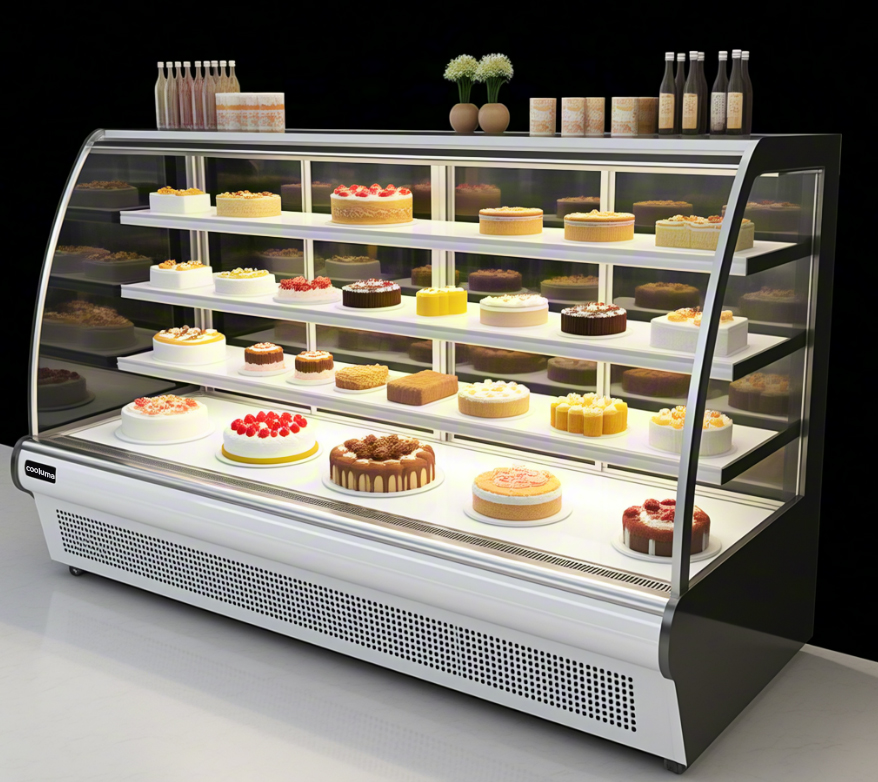
1. Defining the Two Cabinet Types
1.1 Commercial Cake Display Cabinets
Primary Purpose: Designed to showcase and preserve baked goods such as cakes, pastries, and desserts while maintaining their texture, moisture, and visual appeal. They prioritize visibility to attract customer attention, making them a staple in bakeries, cafes, and patisseries.
Key Features: Typically feature glass doors or open fronts, internal lighting (LED strips are common for energy efficiency), and adjustable shelving. The design balances refrigeration with display aesthetics, often using curved glass or minimalist frames to enhance product visibility.
1.2 Refrigerated Cabinets
Primary Purpose: Focus on long-term storage of perishable items at consistent low temperatures. They are used across industries, including restaurants, supermarkets, and food processing facilities, to extend shelf life and prevent bacterial growth.
Key Features: Prioritize insulation and temperature stability over visibility. They may have solid doors (to reduce heat transfer), thicker walls, and larger storage capacities. Some models include features like adjustable temperature zones or blast chilling functions for rapid cooling.
2. Design and Structural Differences
2.1 Aesthetics vs. Functionality
Cake display cabinets are engineered with aesthetics in mind. Their exteriors often feature sleek finishes (stainless steel or matte black), while interiors are designed to highlight products—warm white lighting minimizes color distortion, and mirrored back panels create the illusion of depth. Open-front models (common in high-traffic areas) use air curtains to maintain temperature without blocking visibility, though they consume 10-15% more energy than closed-door versions.
In contrast, refrigerated cabinets prioritize functionality. Solid doors (often with gaskets for airtight sealing) reduce cold air loss by up to 40% compared to glass doors. Their interiors are utilitarian: durable wire shelving (easy to clean), drainage systems for condensation, and reinforced hinges to support frequent opening and closing in busy kitchens.
2.2 Size and Configuration
Cake display cabinets range in size from compact countertop models (60-80 cm width) to large floor-standing units (1.5-3 meters). They are often modular, allowing businesses to combine units for custom layouts. Countertop versions are popular in cafes for showcasing daily specials, while floor-standing models in bakeries may include dual zones—one for cakes (higher humidity) and another for pastries (lower humidity).
Refrigerated cabinets come in diverse configurations: under-counter units (saving space in commercial kitchens), walk-in coolers (for bulk storage), and reach-in cabinets (common in supermarkets). Their sizes vary widely, from 50-liter under-counter models to 5000-liter walk-ins, with standardized widths (60 cm, 90 cm, 120 cm) to fit kitchen workflows.
3. Technical Specifications: Temperature and Humidity Control
3.1 Temperature Ranges
Cake Display Cabinets: Operate in a narrow range of 2-10°C (36-50°F). This range prevents cream from melting while avoiding freezer burn on delicate pastries. Premium models offer precise control (±1°C) to accommodate sensitive ingredients like fresh fruit toppings.
Refrigerated Cabinets: Have broader temperature ranges, typically -2°C to 10°C (28-50°F) for standard models. Specialized units, such as those for meat or dairy, may go as low as -5°C (23°F). Some industrial models include a "chill" mode that drops to -18°C (0°F) for short-term freezing, though this is not recommended for long-term storage of frozen goods.
3.2 Humidity Management
Humidity is critical for cake preservation. Cake display cabinets maintain relative humidity (RH) levels of 60-75% to prevent drying out of sponges and cracking of glazes. This is achieved through built-in humidifiers or moisture-retaining materials in shelving. Open-front models may struggle with humidity control in dry climates, requiring periodic misting systems.
Refrigerated cabinets, by contrast, aim for lower humidity (30-50%) to reduce condensation and mold growth on packaged foods. High-humidity zones (e.g., for leafy vegetables) are rare and limited to specific produce-focused models, often with separate compartments.
4. Energy Efficiency and Sustainability
Both cabinet types are subject to energy efficiency regulations, such as the EU's Ecodesign Directive or the US DOE standards. Cake display cabinets, especially open-front models, face challenges here: their focus on visibility can lead to higher energy consumption. However, advancements like LED lighting (reducing heat output by 70% compared to incandescent bulbs) and inverter compressors (adjusting cooling power based on demand) have improved efficiency by 20-30% in recent years.
Refrigerated cabinets leverage thicker insulation (PU foam with density ≥40 kg/m³) and heat recovery systems (recycling waste heat for water heating) to meet efficiency targets. Variable speed fans and door sensors (alerting staff to open doors) further reduce energy use, with top-tier models consuming as little as 0.5 kWh per day for small under-counter units.
5. Applications Across Industries
5.1 Cake Display Cabinets: Retail and Customer-Facing Roles
- Bakeries: Floor-standing models with tiered shelving to display wedding cakes, tarts, and eclairs. Glass doors with anti-fog coatings ensure products remain visible even in humid environments.
- Cafés: Countertop units near cash registers to upsell desserts. Compact designs (depth ≤50 cm) fit limited counter space.
- Hotels: Freestanding display cabinets in lobbies or restaurants, often with custom branding and ambient lighting to match interior decor.
5.2 Refrigerated Cabinets: Back-of-House and Bulk Storage
- Restaurants: Under-counter refrigerated cabinets for storing prepped ingredients within easy reach of chefs. Drawer-style models save space and reduce door-opening frequency.
- Supermarkets: Reach-in cabinets for packaged meats, dairy, and ready meals. Multi-deck designs maximize shelf space while maintaining consistent temperatures.
- Food Processing Plants: Walk-in refrigerated cabinets for bulk storage of raw materials, with loading docks and pallet racks for efficient logistics.
6. Maintenance and Lifespan Considerations
Proper maintenance extends the lifespan of both cabinet types, which typically ranges from 5-8 years with regular care.
Cake Display Cabinets: Require frequent cleaning of glass surfaces (to remove fingerprints and condensation) and checks on lighting systems. Air filters (in forced-air models) should be replaced monthly to prevent dust buildup, which can reduce cooling efficiency. Humidity sensors need calibration every 3-6 months to avoid moisture-related issues like mold.
Refrigerated Cabinets: Focus on door gaskets (replacing worn ones to prevent cold air leaks) and coil cleaning (every 6 months) to maintain heat exchange efficiency. Drain pans must be emptied regularly to prevent bacterial growth, especially in units storing liquid-rich foods. For walk-in coolers, floor insulation should be inspected for damage from heavy equipment.
7. Selection Criteria for Businesses
Choosing between cake display and refrigerated cabinets depends on three key factors:
1. Primary Use: Prioritize display cabinets if showcasing products to customers is critical; opt for refrigerated cabinets for back-of-house storage.
2. Space Constraints: Countertop cake cabinets work in small cafes, while walk-in refrigerators are better for large-scale operations with high storage needs.
3. Budget: Cake display cabinets with premium features (e.g., anti-glare glass, custom lighting) can cost 30-50% more than basic models. Refrigerated cabinets with energy-efficient compressors have higher upfront costs but lower long-term utility bills.
For businesses needing both functions, hybrid models exist—these combine a front display section (for cakes) with a rear refrigerated storage area, though they are less common and often custom-built.
Commercial cake display cabinets and refrigerated cabinets are indispensable in the food industry, each serving unique purposes. While cake cabinets blend preservation with visual appeal to drive sales, refrigerated cabinets focus on efficient, long-term storage. Understanding their design differences, technical capabilities, and maintenance needs allows businesses to invest in equipment that aligns with their operational goals—whether enhancing customer engagement or optimizing back-of-house logistics. By selecting the right cabinet type, businesses can ensure food quality, reduce waste, and ultimately improve their bottom line.


